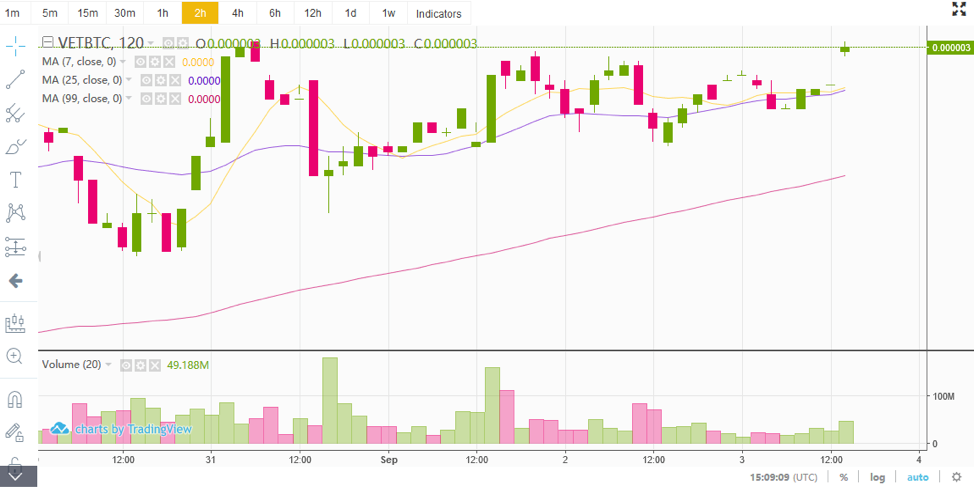VeChain (VET) Review – Business Brought to Life on Blockchain
| VeChain Key Information | |
| Name | VeChain |
| Ticker | VET |
| Total Supply | 86,712,634,466 |
| Initial Price | $0.085 |
| Category | Supply chain and logistics |
| Website URL | Go to Vechain.org |
| White Paper URL | Read Vechain Whitepaper |
As an enterprise level blockchain platform, VeChain’s primary purpose is to help blockchain make inroads with the business community through a system that provides stable governance, integration with the Internet of Things, and a capable team of innovators. This carefully balanced decentralized ecosystem will help manufacturers reduce inputs and costly inaccuracies stemming from the chain of custody of their products, but it has broader use cases as well.
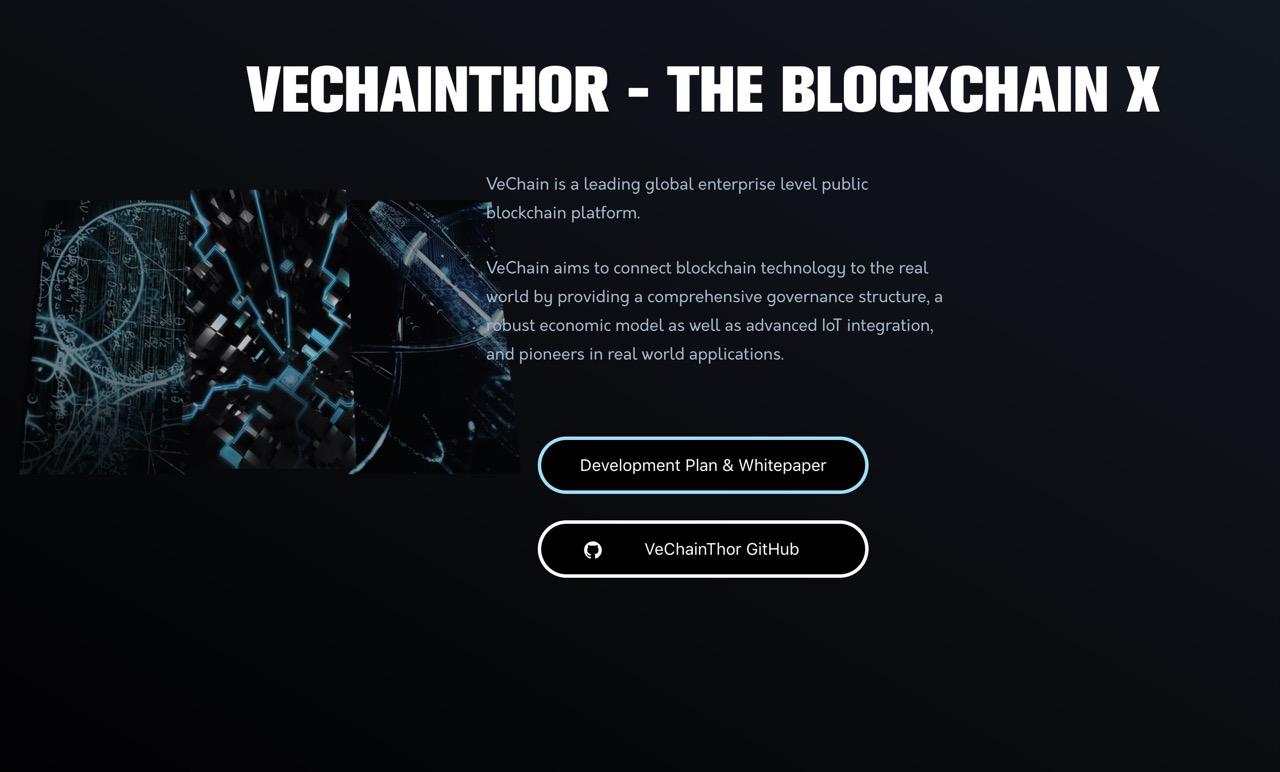
The Idea Behind VeChain
VeChain is a business-focused blockchain solution that seeks to help companies resolve their tangled logistical nightmares with the help of the transparent decentralized ledger. Though ledger-based systems are inherently effective for logistics, they are most relevant for companies coordinating the shipment of sensitive products for which chain of custody is an expensive yet necessary proposition. It is this niche that VeChain is most applicable though the idea can be applied elsewhere just as effectively.
Instead of hiring more human capital or stringing together a haphazard mix of tracking software between stakeholders, companies can instead simply “plug in” to the VeChain blockchain. This is possible due to VeChain’s built-in support for RFID tags and IoT identification, which is already a popular method for tracking cargo, for example. VeChain injects new life into this notion with RFID identities that, when scanned with an application, are automatically registered on the ledger. All it takes for a manufacturer to onboard their inventory and shipments into the ledger (including their ongoing status changes concerning temperature, location and other elements) is to scan items with a smartphone app and granting access to relevant stakeholders.
The example that VeChain gives is a pharmaceutical company with sensitive medicine that must be kept in carefully balanced conditions during shipping. Pill manufacturers can put an RFID tag on a box of medicine, for instance, that when scanned uploads the box’s unique ID to the immutable blockchain ledger. The end customer can scan the tag with their own app upon delivery, to see where and how it travelled, who touched it, and whether any predetermined conditions of the item were violated. With only one unique ID and a permanent ledger to track items, issues of poor chain of custody enforcement, or even fraud, can be eliminated.
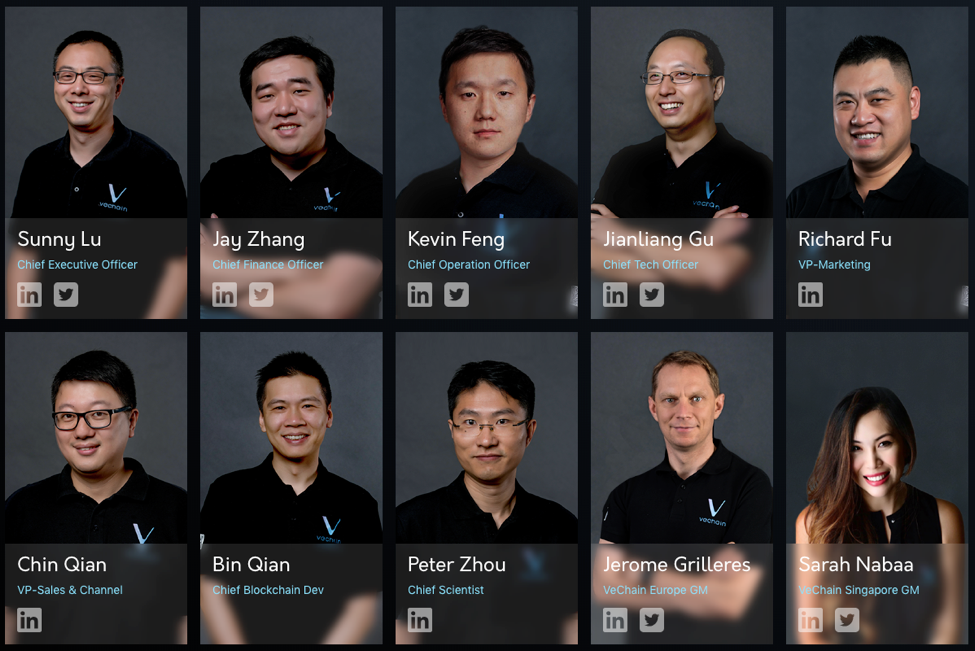
VeChain leadership has helped introduce this idea to many industries including tobacco and alcohol, frozen goods, automotive, luxury retail goods, pharmaceuticals, cold storage and more. This comes as no surprise given the expertise and large network of CEO Sunny Lu, for instance. Lue served as an IT executive at several Fortune 500 firms for 13 years before starting VeChain. Former senior manager at Deloitte and PwC and current VeChain CFO Jay Zhang is another influencer who likely helped forge VeChain’s late partnership with PwC itself.
VeChain Partnerships
For a relatively young startup (launched in late 2017), VeChain has already managed to clinch several big-name partnerships. A recent partnership announcement involves DNV GL, a worldwide leader in quality assurance and risk management, which was announced on March 7, 2018. Central to DNV GL’s operations is that they audit and award certification to companies that pass muster, and they work with VeChain to release these certificates on the ledger so that they’re more accessible. One way it’s already been applied involves DNV GL winery clients that paste IDs on the bottle to use the VeChain DApp (decentralized application) My Story. Wine buyers can then eventually see where the grapes were sourced and how they were harvested.
VeChain has also landed a big fish early on with PricewaterhouseCoopers, the internationally renowned accounting and auditing firm. The venture is a two-way street, with PwC advising VeChain where necessary but also signing up their own clients to VeChain’s My Story DApp mentioned above. For example, PwC client DIG uses My Story to enforce fraud prevention in their Chinese liquor distribution system, so that bottle-buyers at the end of the supply chain can check to see that their alcohol is legitimate. VeChain has signed up several other global enterprise-level companies that desire similar functionality, such as Kuehne & Nagel (international sea and air freight).
VET Price History
The ICO for VeChain was launched on August 17, 2017. Right before the runup to Bitcoin’s near-$20,000 all-time high, the token VEN would quickly experience volatility during its young and untested first months. During the ICO, 3500VEN was the equivalent of 1ETH, which was hovering near $300 at the time, giving 1 VEN the initial value of $0.085.
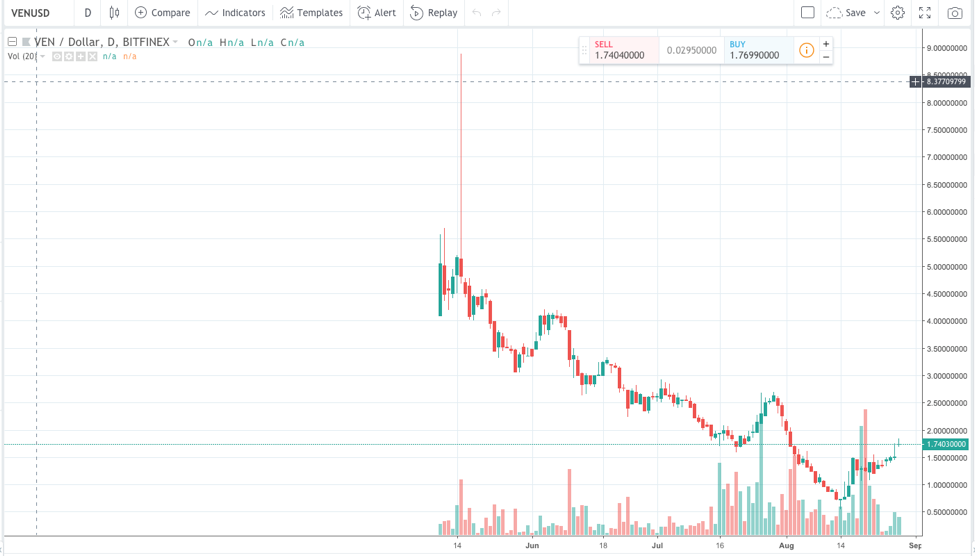
Price soon began climbing as the cryptocurrency market bubble ramped higher, with VEN reaching a price of over $9.00 early in January 2018. As the market settled in the following months, VEN struck a similar tune, bottoming out at $2.35 in March and retracing to $5.05 before falling to $1.62 in June.=
Upon the release of VeChain’s Thor mainnet platform in July 2018, the company launched a token swap program for investors to convert their VEN to VET at a 1:100 ratio. The current price of 1 VET is $0.018. The purpose of the swap was to switch from an Ethereum-based token to one that is native to VeChainThor.
VeChain Technology
The core of VeChain’s offering is its newly released mainnet version of VeChainThor, which is its own standalone blockchain. It has its own crucial components, including a new Thor wallet for the swapped token VET, as well as those that govern the economics and logistics side of the solution.
VeVID: VeChain Identity
VeChain Identity technology is what makes it so easy to scan, onboard and track items on the ledger. When a new product is scanned, it’s given a VID that corresponds to a unique and encrypted SHA256 hash, which can then be written into the product’s RFID code, for example. VID also supports matching with NFC (Near-Field Communication) devices, other IoT devices, and also common scan technology like simple barcodes or QR codes. This makes it possible for each item to have a unique ID that cannot be tampered with, and to track what happens to any single item no matter where it’s been or how far it’s traveled.
Nodes
Every blockchain needs nodes, which are essentially the distributed sources of its power. VeChain allows companies using its blockchain to run their own nodes, which might have special functionality based on their specific demands. A node for a wine company using VeChain, for instance, might have a node that needs special private and public key management capabilities. Nodes can also be public, and reward VET tokens to those who run them and help support the ecosystem. There are four types of nodes, classified based on how much VET one will need to hold to run it:
- Strength Nodes: 10,000VET
- Thunder Nodes: 50,000VET
- Mjolnir Nodes: 150,000VET
- Thrudheim Nodes: 250,000VET
The first three node types will receive the standard reward for holding VET (of 0.00042 THOR per VET per day) plus a bonus from the VeChain Foundation. The last node (Thrudheim) will also receive an extra 30% in THOR (see below) that is consumed when transacting on the network.
Two-Coin Ecosystem
For holding VET, even if you aren’t running a node, VeChain rewards you with THOR—their second-layer coin that is used like NEO’s GAS to run smart contracts and applications built on VeChainThor. This means that companies which rely on VeChain to track their supply chains and reinforce logistical flows have a real incentive to run their own node.
Thor Wallet
No proprietary blockchain solution is without its own wallet, and the VeChainThor mobile wallet claims this role for VeChain. Introduced alongside VeChainThor, the wallet supports the new VET token and THOR generation, and will soon integrate VeVID and other DApps planned for VeChainThor as well. VeChain intends for its wallet to be the epicenter of a decentralized ecosystem where people transact with each other, buy products, and manage the private keys to their many personalized services.
How to Purchase VET
The most popular place to trade VET is on Binance, with a cumulative 90% of total token volume on this exchange alone and Tether (USDT) being the most popular counter currency. However, one can also find VET on exchanges such as Huobi, Lbank, Gate.io, and KuCoin. Over all these exchanges, VET is buyable using Tether, Bitcoin, Ethereum, and Binance Coin. On Binance, the 24h volume of VET is $17,475,109.
VET is also available on the following exchanges:
- Binance (Trade VET with USDT on Binance)
- Binance (Trade VET with BTC on Binance)
- Binance (Trade VET with ETH on Binance)
- LBank (Trade VET with BTC on Lbank)
- Huobi (Trade VET with USDT on Huobi)
How to Store VET
As a relatively new token (recently swapped from VEN), one will find few places to store their VET tokens, with the best place obviously being the official VeChainThor mobile wallet. There are a handful of other destinations for storing your VET, including MyEtherWallet and some hardware solutions like Trezor as well. Be aware, however, that there isn’t yet native support for VET using a hardware wallet. Once the VeChain token integration with Ledger is released, more storage options will likely surface.
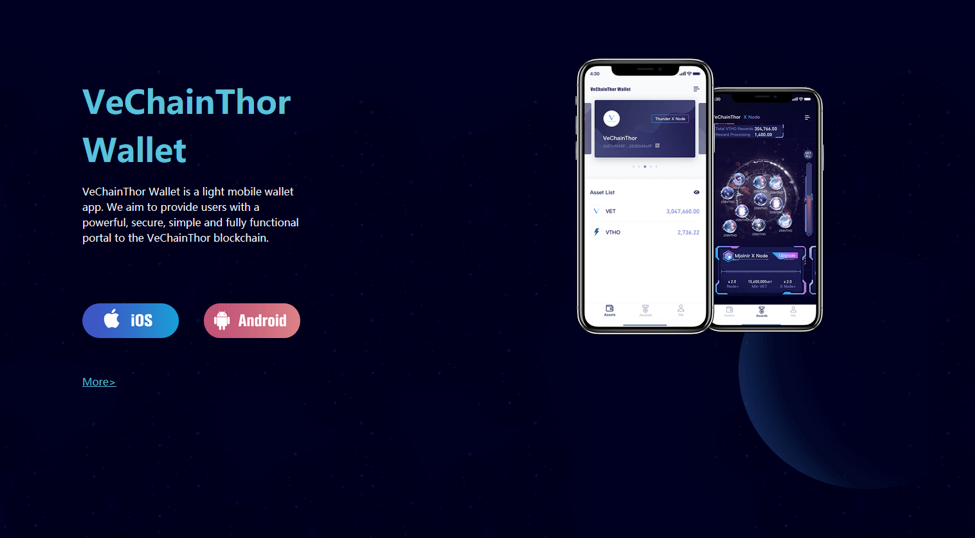
Road Map and Future Plans
VeChain has made impressive strides in its few years of existence and managed to hit its milestones in a timely manner, not the least of which was mainnet release of Thor. In the fourth quarter of 2018, VeChain plans to release cross-chain and side-chain integration, which will help position the VeChainThor blockchain in the same interoperability league as more mature blockchain platforms.
Now that its own blockchain has been released, the capital raised by VeChain during its ICO will be allocated towards signing corporate partners to its Foundation and helping them integrate the blockchain into their logistics and supply chain systems. With a proven product and a growing list of companies that rely on VeChain, the value of its ecosystem will increase and gain greater mainstream attention

